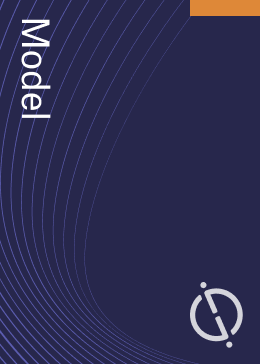Setrusumab is a monoclonal antibody commercialized by Ultragenyx Pharmaceutical, with a leading Phase III program in Osteogenesis Imperfecta. According to Globaldata, it is involved in 8 clinical trials, of which 4 were completed, 2 are ongoing, 1 is planned, and 1 was terminated. GlobalData uses proprietary data and analytics to provide a complete picture of Setrusumab’s valuation in its risk-adjusted NPV model (rNPV). Buy the model here.
The revenue for Setrusumab is expected to reach an annual total of $229 mn by 2038 globally based off GlobalData’s Expiry Model. The drug’s revenue forecasts along with estimated costs are used to measure the value of an investment opportunity in that drug, otherwise known as net present value (NPV). Applying the drug’s phase transition success rate to remaining R&D costs and likelihood of approval (LoA) to sales related costs provides a risk-adjusted NPV model (rNPV). The rNPV model is a more conservative valuation measure that accounts for the risk of a drug in clinical development failing to progress.
Setrusumab Overview
Setrusumab is under development for the treatment of osteogenesis imperfecta type I, III and IV (also known as Brittle bone syndrome). The drug candidate is administered intravenously through infusion. It is a fully humanized monoclonal antibody targeting sclerostin. It was also under development for hypophosphatasia (HPP), osteoporosis in postmenopausal women and chronic kidney disease.
See Also:
Ultragenyx Pharmaceutical Overview
Ultragenyx Pharmaceutical (Ultragenyx) is a biotechnology company that develops novel medicines for rare and ultra-rare genetic diseases. It has four marketed products, Mepsevii (vestronidase alfa) for the treatment of Mucopolysaccharidosis (Sly syndrome); Dojolvi (triheptanoin), a highly purified, synthetic, 7-carbon fatty acid triglyceride for long-chain fatty acid oxidation disorders (LC-FAOD) and Crysvita (burosumab), a fully human monoclonal antibody for the treatment of X-linked hypophosphatemia (XLH); Evkeeza (evinacumab) for the treatment of homozygous familial hypercholesterolemia (HoFH). Its pipeline includes DTX401 for the treatment of glycogen storage disease type Ia, or GSDIa; UX701 for Wilson disease; UX053 for glycogen storage disease type III; and GTX-102 for Angelman syndrome in partnership with GeneTx. It works in partnership with various academic institutes and biotechnology companies to advance its product candidates. Ultragenyx is headquartered in Novato, California, the US.
The company reported revenues of (US Dollars) US$363.3 million for the fiscal year ended December 2022 (FY2022), an increase of 3.4% over FY2021. The operating loss of the company was US$648.9 million in FY2022, compared to an operating loss of US$381.7 million in FY2021. The net loss of the company was US$707.4 million in FY2022, compared to a net loss of US$454 million in FY2021.
The company reported revenues of US$98.1 million for the third quarter ended September 2023, a decrease of 9.5% over the previous quarter.
For a complete picture of Setrusumab’s valuation, buy the drug’s risk-adjusted NPV model (rNPV) here.
Premium Insights
From

The gold standard of business intelligence.
Blending expert knowledge with cutting-edge technology, GlobalData’s unrivalled proprietary data will enable you to decode what’s happening in your market. You can make better informed decisions and gain a future-proof advantage over your competitors.



